The Most Venomous Snakes Found In The Wild In America
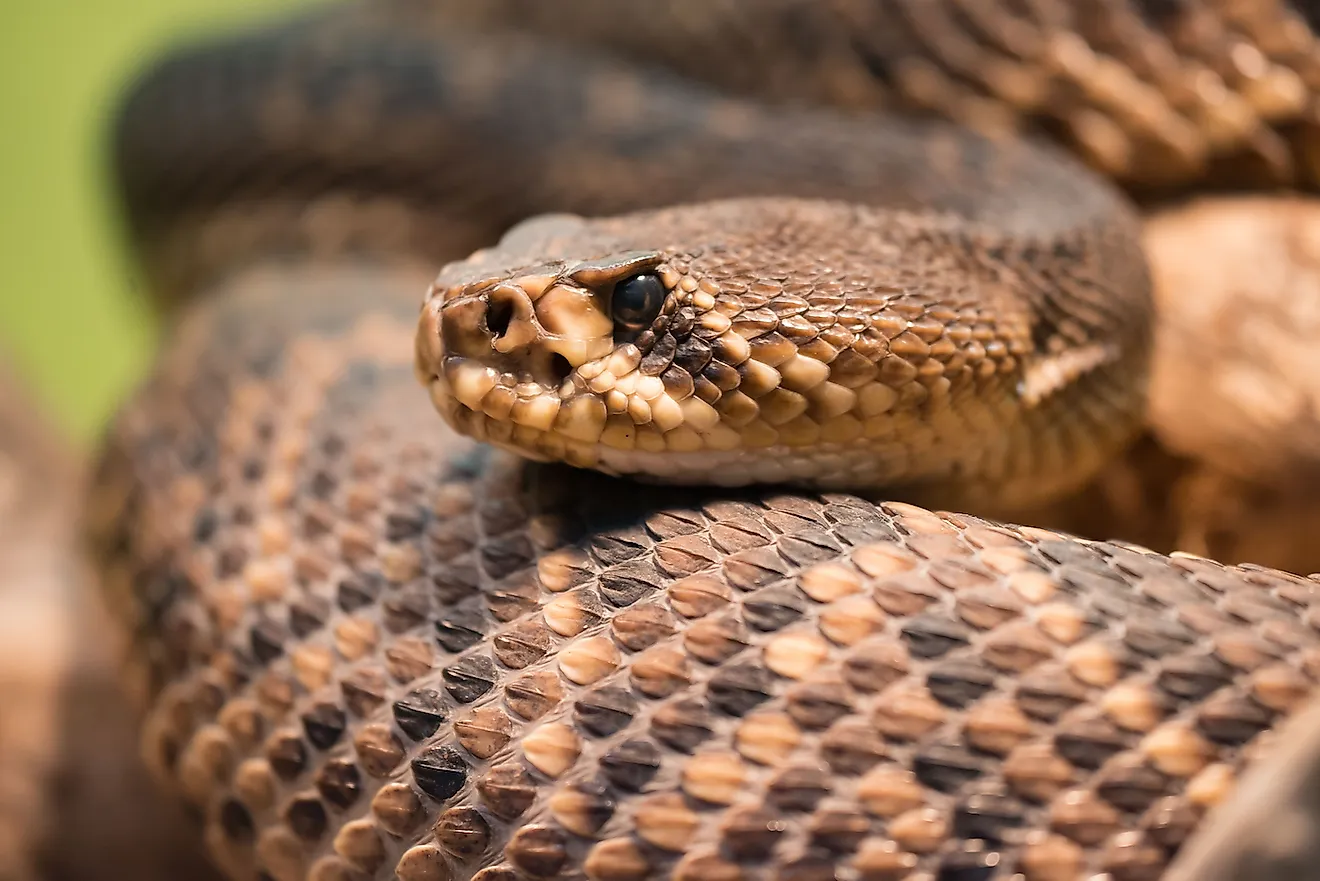
- Although rattlesnakes are known to use their infamous rattle to warn predators, they do not always rattle before biting.
- You are nine times more likely to be struck by lightning than die from a venomous snake bite!
- Only venomous snakes have fangs.
- There are more than 3000 species of snakes, around 600 of those are venomous and 200 are medically important.
The CDC mentions there are four groups of venomous snakes in America, which include: rattlesnakes, copperheads, cottonmouths/water moccasins, and coral snakes. World Health Organization (WHO) categorizes their severity into two categories: Category 1 is the highest medical importance and Category 2 is considered secondary medical importance. Category 1 snakes are by definition “highly venomous snakes that are common or widespread and cause numerous snakebites, resulting in high levels of morbidity, disability or mortality.” Listed are the top 5 deadliest snakes in America, all belonging to WHO Category 1.
Western Diamondback Rattlesnake (Crotalus atrox)
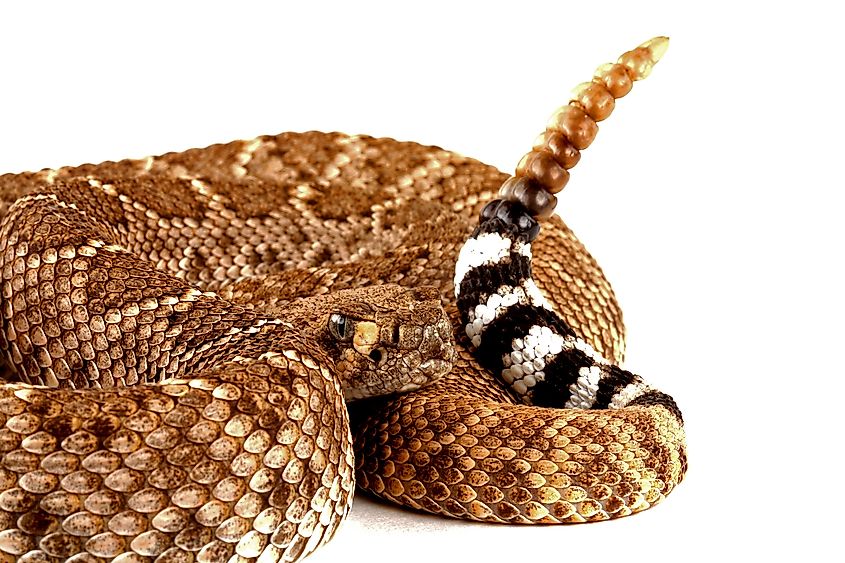
This triangular headed snake can stretch up to seven feet long, and lives in diverse habitats. Look out for this deadly rattler while in the Sonoran Desert in Arizona where it is often found. The Western Diamondback is known for its erratic behaviour and is easily excited, causing the most fatalities in the US of any other snake.
Eastern Diamondback Rattlesnake (Crotalus adamanteus)
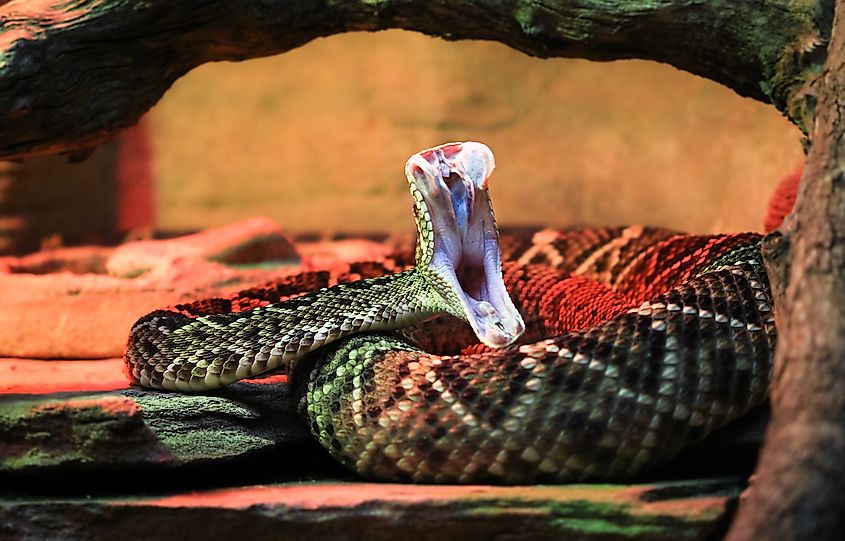
As the largest venomous snake in North America, reaching up to eight feet long, the Eastern Diamondback Rattlesnake can strike up to two thirds of its body length. They do not tend to attack unless severely provoked by humans looking to taunt or trap them. If bitten, their bites can be fatal but thankfully there are antivenoms readily available. This snake is found in the south of North Carolina to Florida and west towards Louisiana. As their natural habitats in woodland areas are depleting, they can be often found in backyards, golf courses and parking lots.
Cottonmouth/Water Mocassin (Agkistrodon piscivorus)
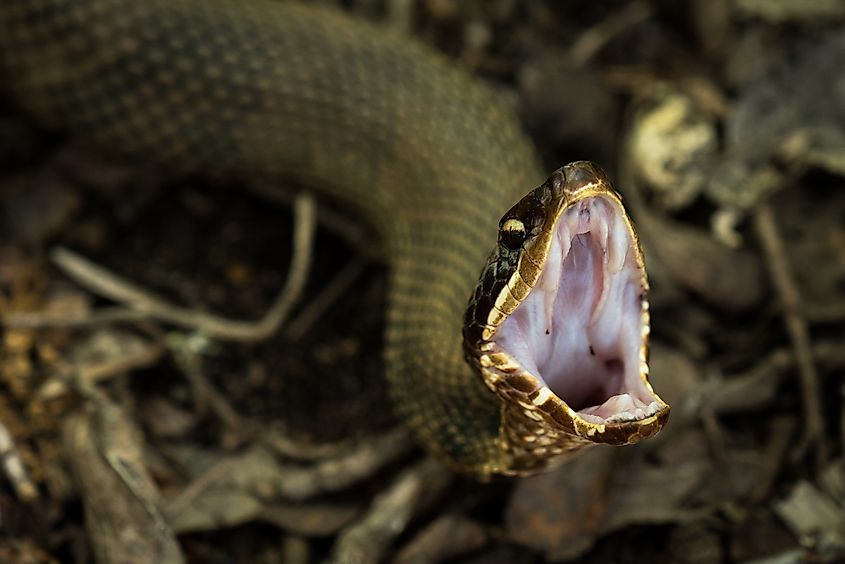
Cottomouth snakes, also known as Water Mocassins, are often found in or around water, generally within the Southeastern States, such as North Carolina to Florida. As there are a plethora of water snakes, many often mistake other snakes for this venomous predator. If you do get close enough to check, you will notice the pupil of the cottonmouth is vertical, opposed to round. Unlike a rattler, this snake does not give off an auditory signal that it is in danger, instead it will coil its body and open its mouth wide. Of the many venomous snakes, the cottonmouth is considered docile in comparison to the rest.
Copperhead (Agkistrodon contortrix)
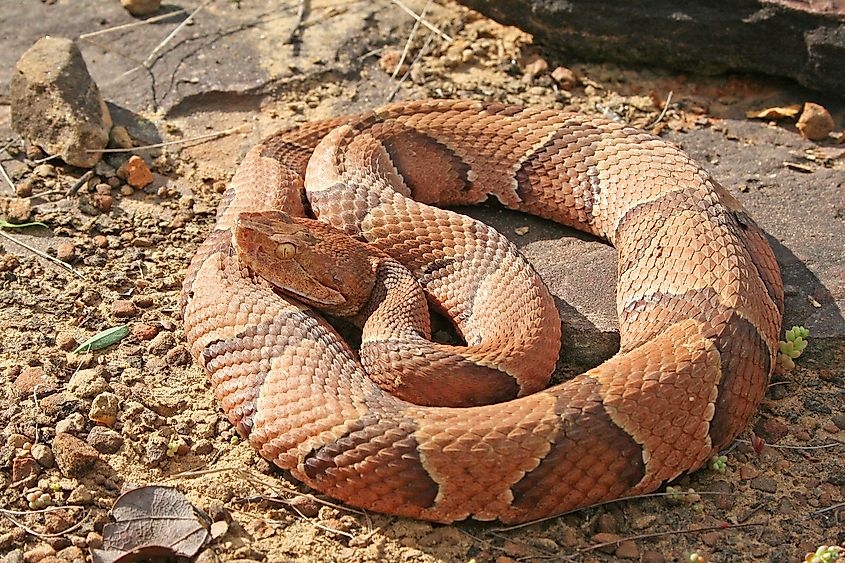
Known as America's most ravenous snake, the copperhead bites more Americans in a year than any other snake. The deadly Copperhead can be found in swamps, forests, rocky terrain or near water. Keep an eye out for these snakes in the Eastern States, extending as for as Texas. If bitten, antivenom can result in faster limb recovery and reduced disability of the limb. Of the snakes on this list, the copperhead's bite is the least dangerous to healthy adult but do have a very painful bite. Look out for these stout, copper-red headed snakes who can adapt to a variety of different habitats, from saw-dust pile to the suburbs.
Eastern Coral (Micrurus fulvius)
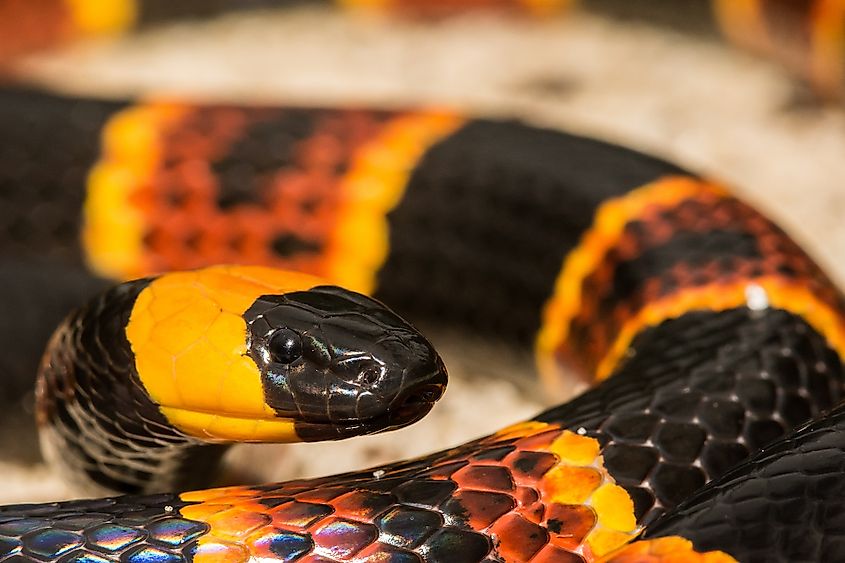
This secretive, black-nosed snake can be found in southeastern United States. They frequent wooded, marshy, and sandy areas—especially around piles of leaves or underground burrows where they like to hide. Eastern corals are quite elusive and are generally spotted in suburban areas. Although closely related to the rattlesnake, their bite is not believed to be as harmful or life-threatening as the Eastern Diamondback Rattlesnake.
You've Been Bitten, Now What?
The University of Florida’s Department of Wildlife Ecology and Conservation assures that odds of an American dying from a snakebite on home soil is nearly impossible, but not unheard of. The Centre for Disease Control Prevention (CDC) attest that there are 7-8,000 people bitten in a year and of this 5-6 people will die from their injuries. But, what do you do if you are one of the 8,000 people bitten by a venomous snake? Dr. Brad Dahl from Utah Poison Control Centre warns not to cut and suck—contrary to popular belief. If bitten seek immediate medical attention once bitten and remain calm (which may be easier said than done).











